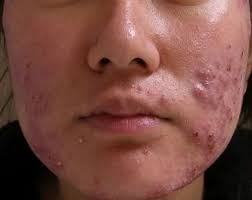Clinically Proven” Claim – Scientific Indication
Scientific indications are usually supported with clinical data from relevant human studies that have likely undergone some scientific assessment or scrutiny. Due to this quantifiable scientific research undertaken into their mode of action and/or health benefit, this evidence type is appropriate to support efficacy for your listed medicines/products.
The claim ‘clinically proven’ has become very in demand with marketers of both therapeutic and cosmetic products. This is likely due to the fact that this claim may provide consumers with greater confidence in their choice of products.
In reality, despite the fact that ‘what’ has been clinically proven is not often disclosed, stating that the product is clinically proven suggests that there are proven benefits in using these products, which is enough to influence some consumers to choose these products over others. This is because common consumers might understand a product as having better efficacy, higher safety, or more reliable results.
The word ‘clinical’ refers to the fact that the product has undergone one or more clinical trials, which are clinical studies conducted by a qualified research team in a controlled, scientific unbiased manner. The power of the scientific method is that one can be certain any results obtained are not due to external or uncontrolled factors, and if documented properly, such an experiment is repeatable for anyone wishing to independently verify the results.
The word ‘proven’ means that in the clinical trial(s), the results obtained have been demonstrated to be statistically significant. This means that one can be fairly confident that the results of the product and a test comparator were not obtained due to random variance (chance), or other extraneous factors.
For complementary medicines, the TGA (Australian Government) has some guidance on the use of this term, on their website stating that “…These terms are not acceptable unless supported unequivocally by robustly designed, published peer-reviewed clinical trial(s) conducted on the actual medicine being advertised, or an identical formulation and dose (as a minimum)”. For cosmetic products, the lack of guidelines for the use of claims such as clinically proven might have contributed to some common misconceptions.
The use of the term ‘clinically proven’ in scientific indication infers a level of certainty in the implied health benefits associated with the listed medicines/products in that it has been clinically trialled and proven to be effective. These terms are not acceptable unless supported unequivocally by robustly designed, published peer-reviewed clinical trial(s) conducted on the actual medicine/products being advertised, or an identical formulation and dose (as a minimum). The use of the terms ‘clinical’, ‘clinically’, and ‘scientifically’ coupled with ‘trialled’ or ‘tested’ implies a higher level of certainty associated with the health benefit of your medicine/product and unless matched by well-designed series of clinical studies on your specific medicine/product, may mislead consumers about the effectiveness of your medicine/product.
You must compare your indication with the quoted health benefit in your evidence identified from scientific sources. Your indication will refer to the same clinically significant study outcomes as that reported in the clinical study.
In selecting your scientific indication you should:
- ensure that the medicine’s/product’s therapeutic benefit is demonstrated by the clinical study outcomes
- ensure that any claims you make from your medicine/product imply only the same level of certainty in clinical effectiveness as that reported in clinical studies, for example ‘clinically proven to…’ compared to ‘may assist to…’
Source: (Administration, 2019)







